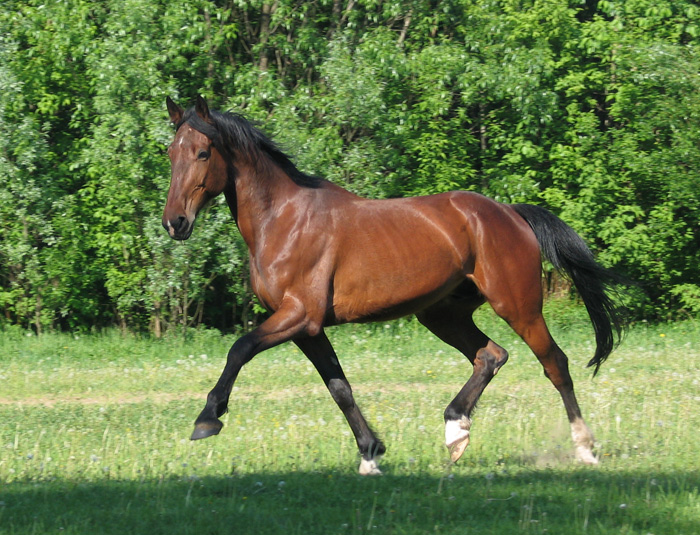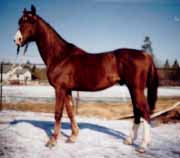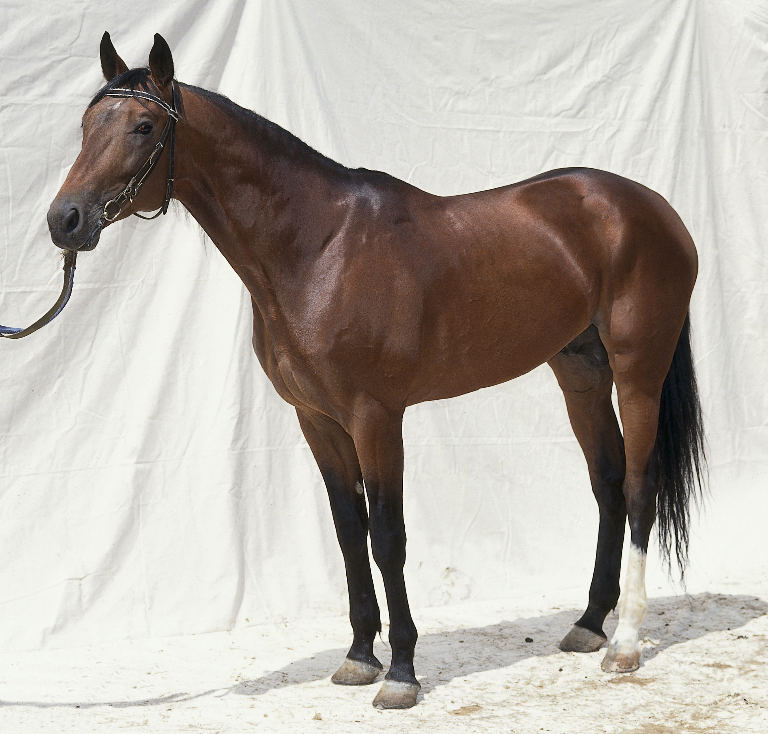



|
Russian Trotter Qualities
Russian Trotter horses are found in the cold fields of Russia. They are generally used as harness horses, but can also be used for competitions or for transporting passengers. They can also be found in Ukraine, Moscow, Belarus, and are still very popular all the outskirts of the Soviet Union. There they are still currently found in racing in tracks that are popular in Moscow and in St. Petersburg
Russian Trotter Temperament
The temperament of the Russian Trotter horse is that of tenderness and youthfulness. They are generally very tough creatures that can withstand any task, but on the flip side of that they also equally as quiet and gentle. They are easy to train when they are young and are also very full of life and energy.
Russian Trotter Appearance
The Russian Trotter bodes a full grown size of sixteen hands as adults. They bode a straight head, a regular sized wither, long legs, and a sloping croup. This style can be bred in chestnut, gray, bay, and black variations. They can be spotted easily with their long and defined legs, which are ideal for running and racing. Ordinarily, they can also have shiny coats of fur and wear a very alert expression on their faces.
Russian Trotter Upkeep
To care for a Russian Trotter you will simply need to ensure they have enough room to roam and play during the day, especially if they will be unsupervised. This breed can fend for themselves most of the day, but may need attention from their owners at some point much like a small child would. They do not have any reported major health illnesses and can reside in hot or cold climates.
Russian Trotter History
The Russian Trotter obviously derives from Russia, where they are not in fact the most famous breed to ever come out of the area (that would be the Orlov Trotter). Shortly after their creation, the American Standardbred variation was beginning to gain fame for their amazing speed and agility. To alter their success, locals began breeding the Russian Trotter styles. This occurred around the late portion of the nineteen hundreds and they went on to earn thousands of dollars for their owners in competitions. Their bloodlines, added of American descent, made them more quick and gave them the ability to be more dependent on themselves. While this breed went on to become very successful, they were eventually bred to their original styles of Orlov Trotters and Standardbred variations around the middle of the nineteenth century.
|